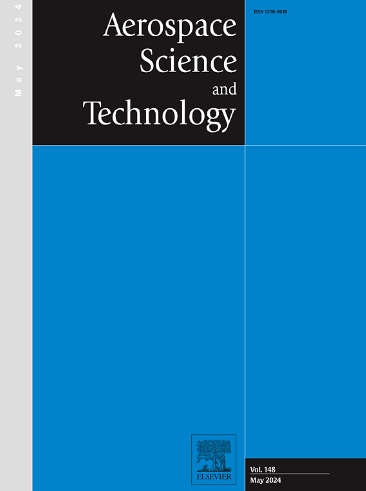Stability enhancement of an axial fan by foam metal casing treatment subjected to circumferential inlet distortion
IF 5
1区 工程技术
Q1 ENGINEERING, AEROSPACE
引用次数: 0
Abstract
Circumferential distortion has been a concern since the early development of aeroengines, typically leading to a decrease in stability and efficiency. This paper experimentally investigates the effect of circumferential distortion on a low-speed axial fan and evaluates the potential of foam metal casing treatment (FMCT) to improve the stall margin. Distortions with different intensities were modeled by covering variable areas with wire mesh sectors. Under different distortions, the stall margin with solid casing drops significantly from 38.6% to -7.4%, while FMCT achieves a notable improvement ranging from 14% to 20%. Unsteady measurements were conducted to analyze the pre-stall behavior and the variation in the tip blade loading. The evolution of disturbance energy is presented to discuss the effects of distortion and FMCT on fan stability. It is observed that the proportion of low-frequency disturbance energy amplifies gradually when the rotor is leaving the distorted region. As the distortion angle increases, the maximum amplitude of proportion intensifies. The comparison of the disturbance energy at near stall point between solid casing and FMCT shows that the broadband disturbance energy is suppressed by FMCT. Additionally, the enhancement of stability under inlet distortion is also attributed to the redistribution of tip blade loading.
求助全文
约1分钟内获得全文
求助全文
来源期刊

Aerospace Science and Technology
工程技术-工程:宇航
CiteScore
10.30
自引率
28.60%
发文量
654
审稿时长
54 days
期刊介绍:
Aerospace Science and Technology publishes articles of outstanding scientific quality. Each article is reviewed by two referees. The journal welcomes papers from a wide range of countries. This journal publishes original papers, review articles and short communications related to all fields of aerospace research, fundamental and applied, potential applications of which are clearly related to:
• The design and the manufacture of aircraft, helicopters, missiles, launchers and satellites
• The control of their environment
• The study of various systems they are involved in, as supports or as targets.
Authors are invited to submit papers on new advances in the following topics to aerospace applications:
• Fluid dynamics
• Energetics and propulsion
• Materials and structures
• Flight mechanics
• Navigation, guidance and control
• Acoustics
• Optics
• Electromagnetism and radar
• Signal and image processing
• Information processing
• Data fusion
• Decision aid
• Human behaviour
• Robotics and intelligent systems
• Complex system engineering.
Etc.
 求助内容:
求助内容: 应助结果提醒方式:
应助结果提醒方式:


